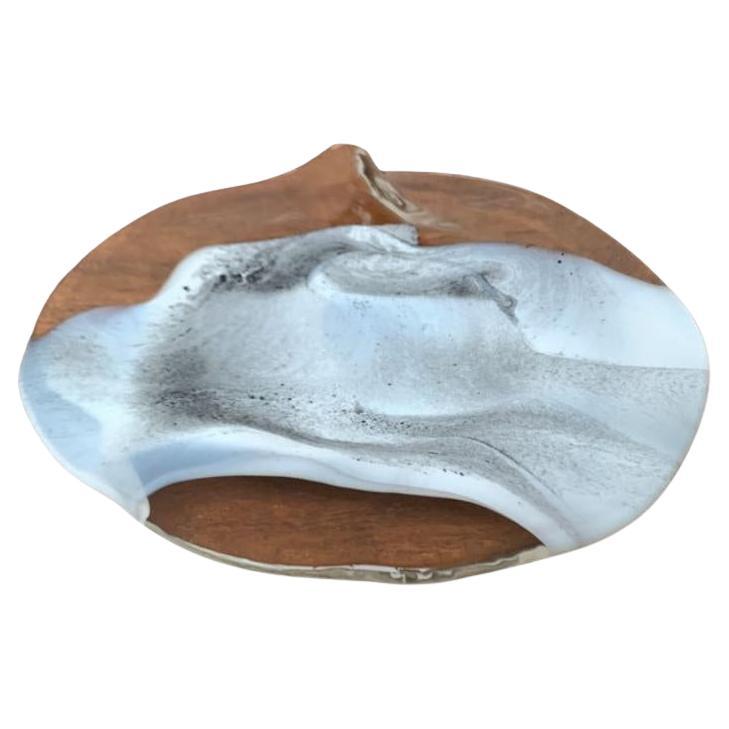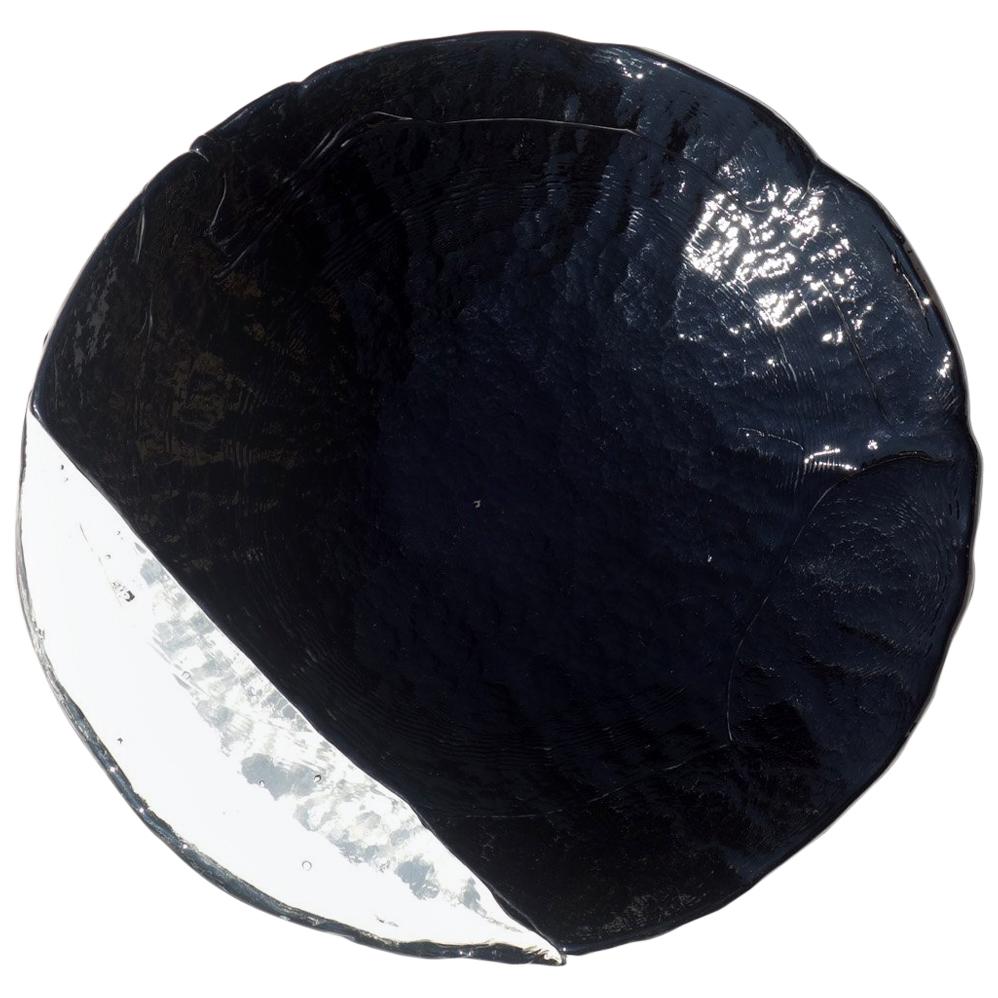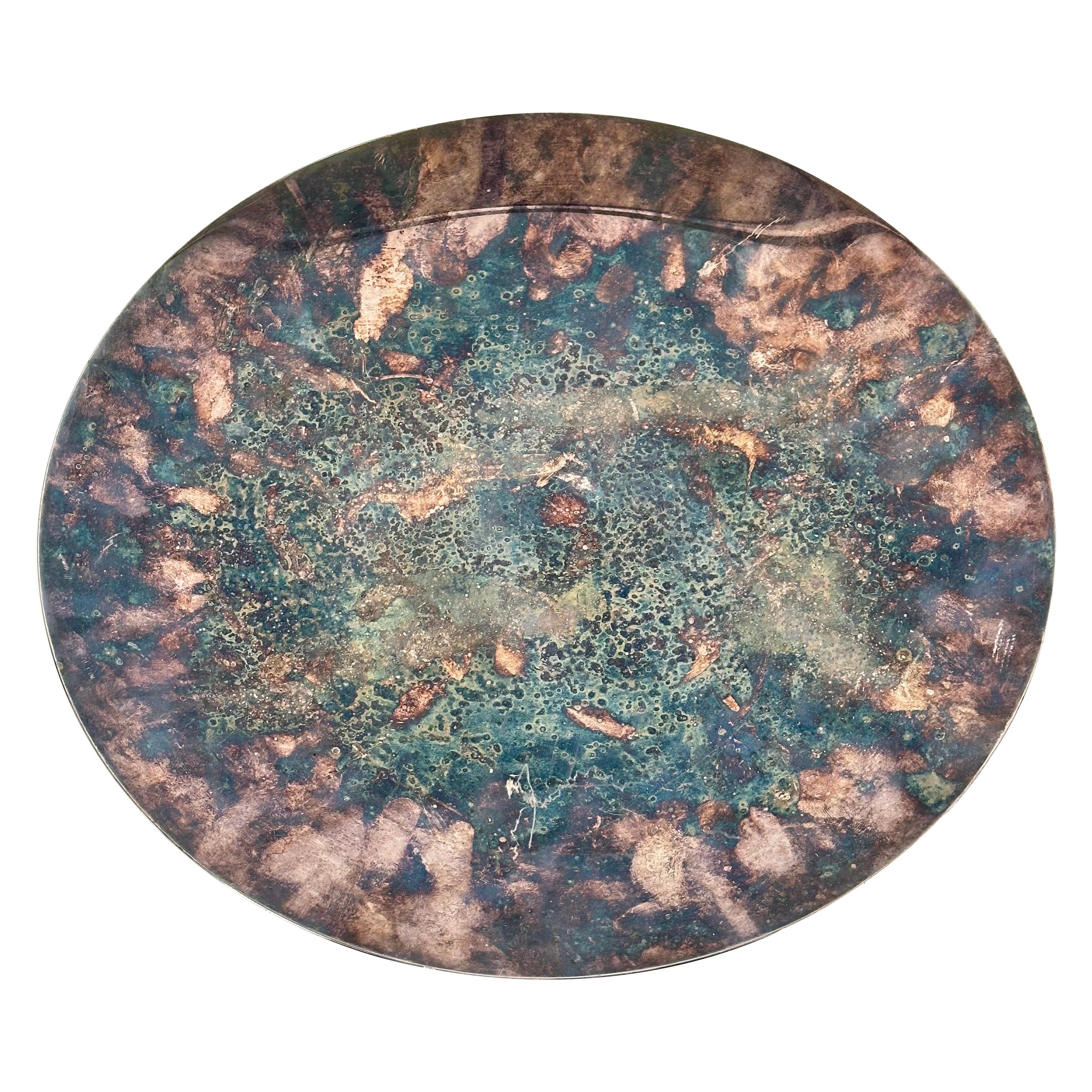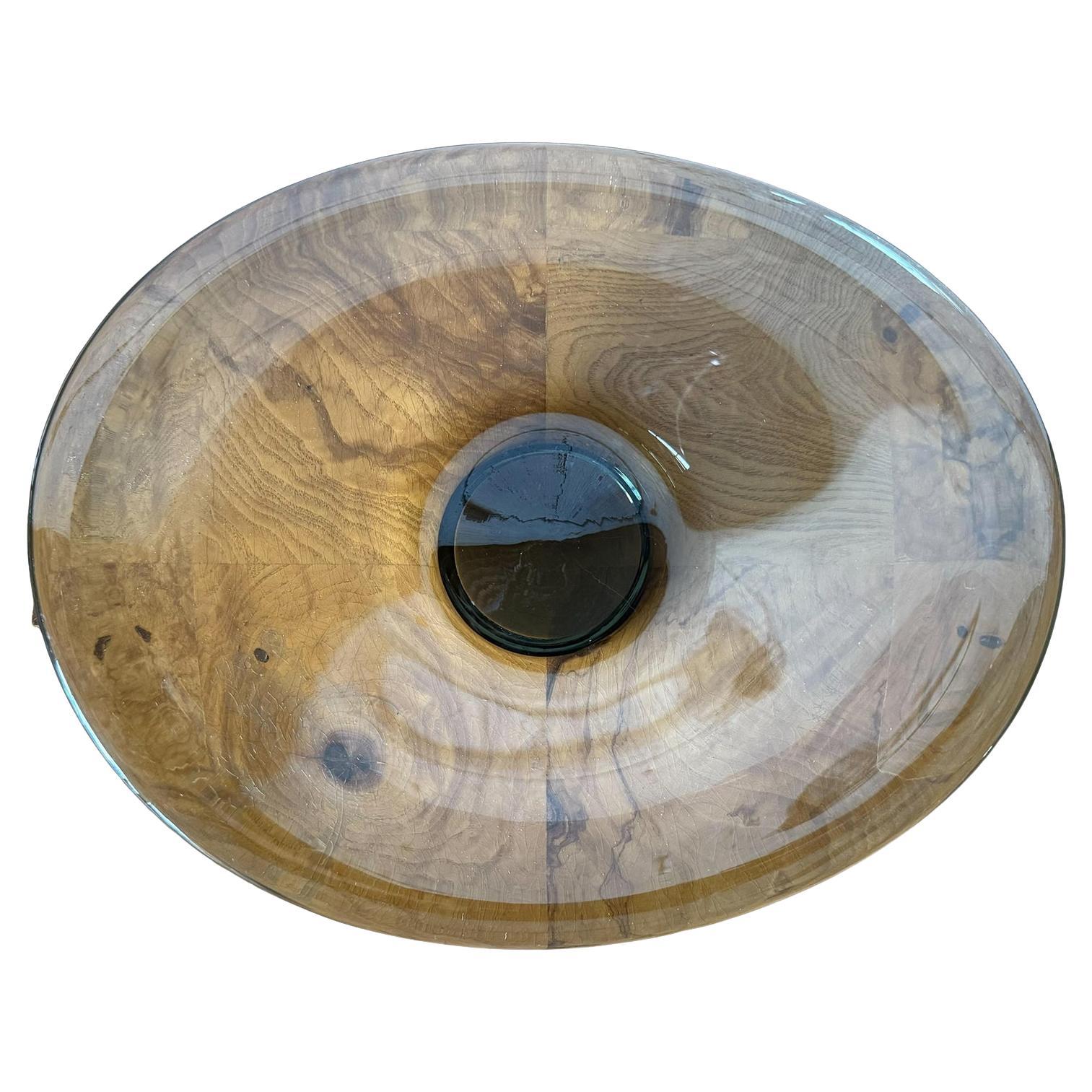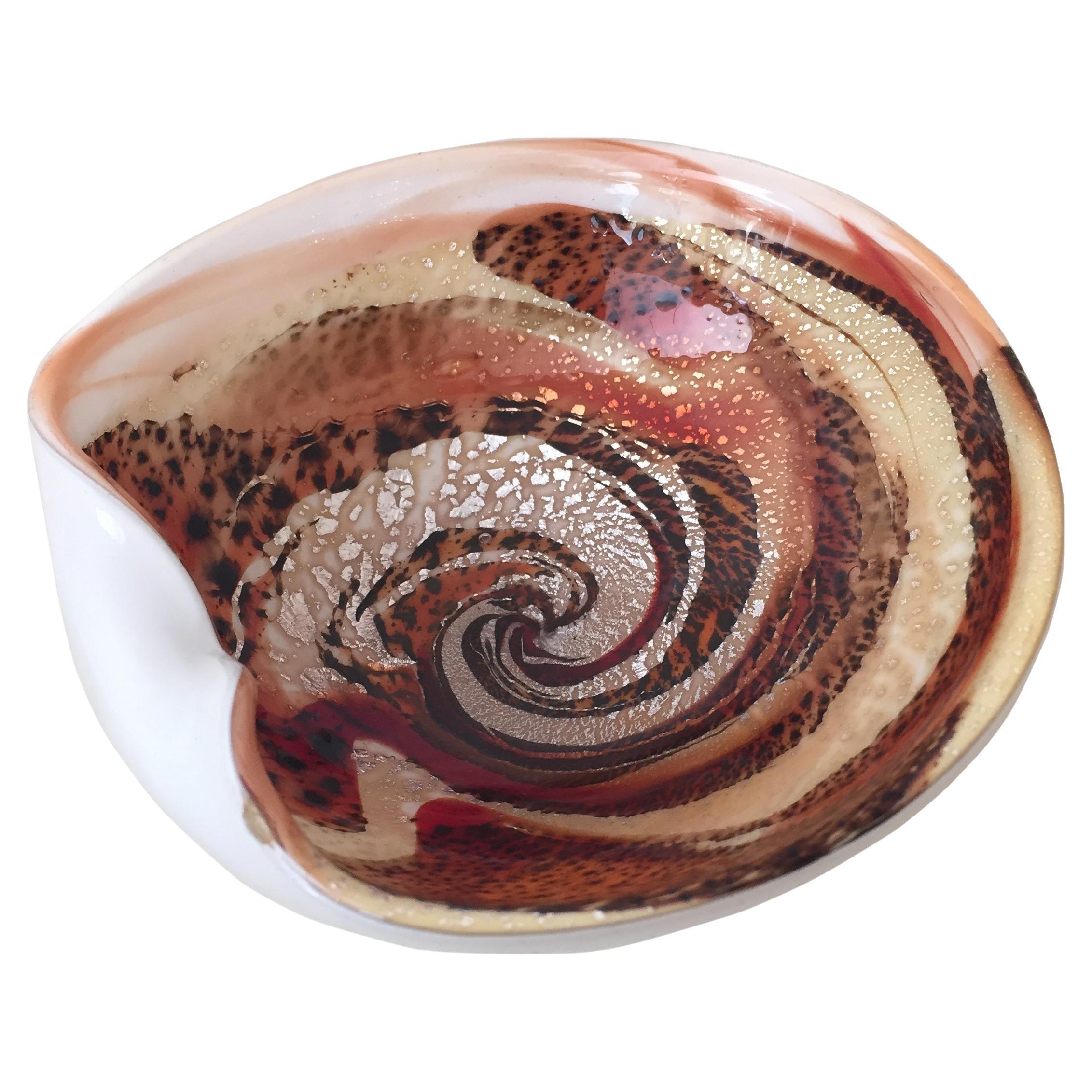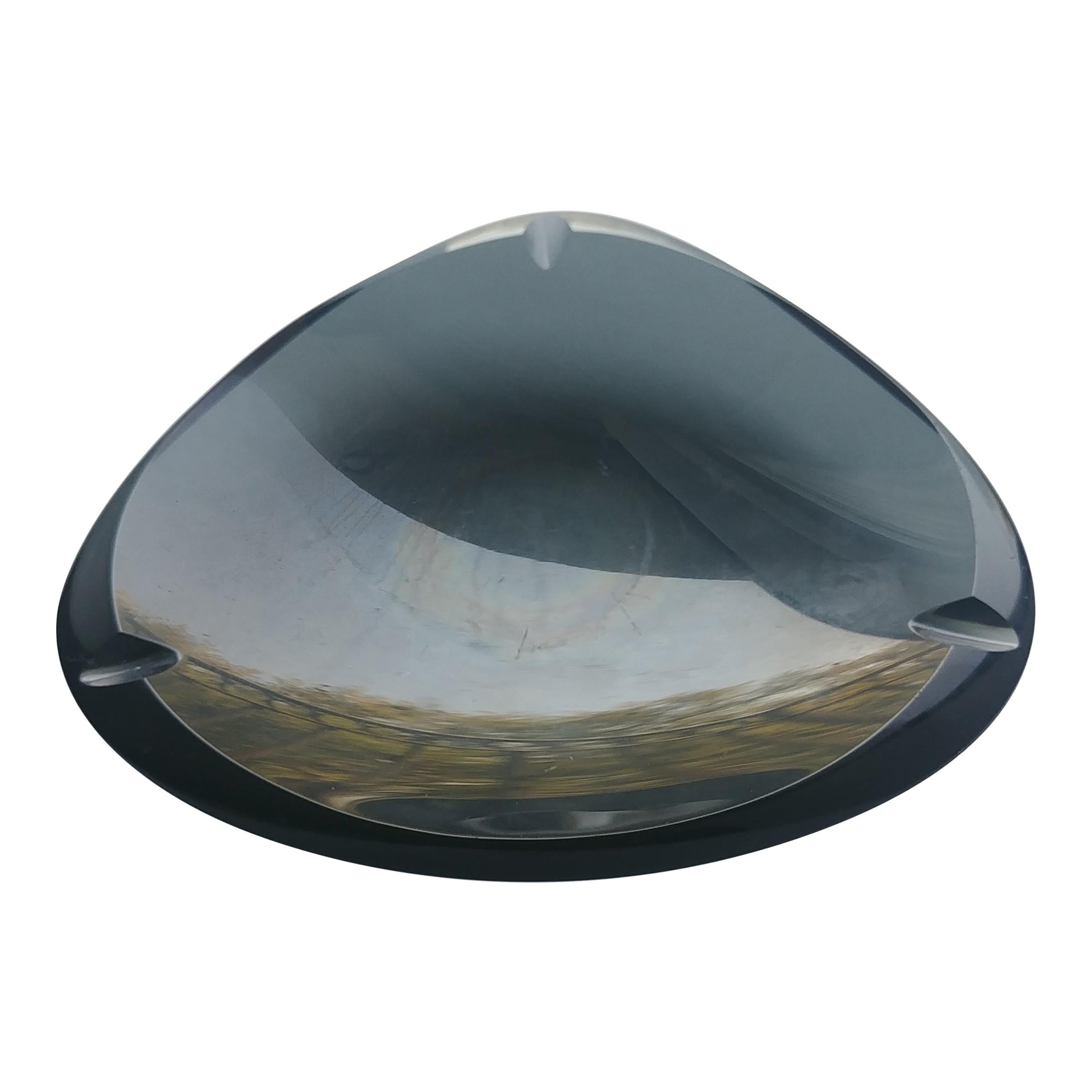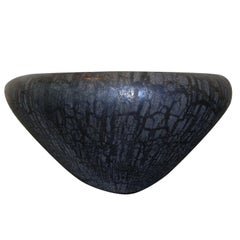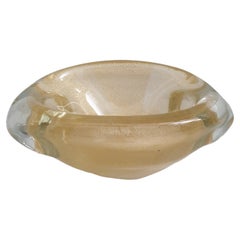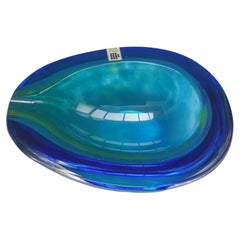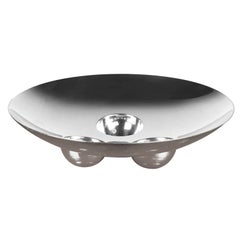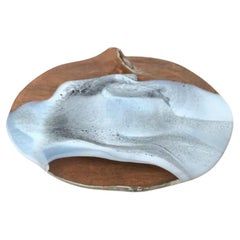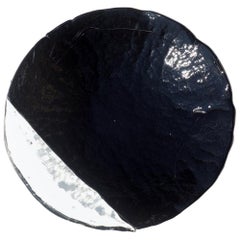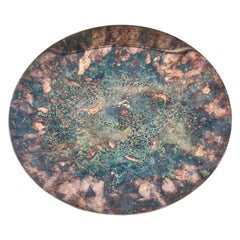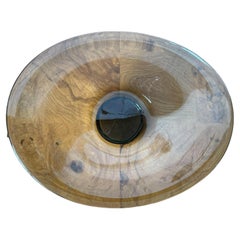Items Similar to Glass Plate on Stand Signed Barbini
Want more images or videos?
Request additional images or videos from the seller
1 of 7
Glass Plate on Stand Signed Barbini
$1,534.48
$1,918.1020% Off
£1,120
£1,40020% Off
€1,308.63
€1,635.7920% Off
CA$2,136.29
CA$2,670.3620% Off
A$2,336.78
A$2,920.9720% Off
CHF 1,221.73
CHF 1,527.1620% Off
MX$28,147.12
MX$35,183.9120% Off
NOK 15,269.87
NOK 19,087.3320% Off
SEK 14,404.98
SEK 18,006.2220% Off
DKK 9,768.80
DKK 12,21120% Off
About the Item
Unusual plate with white lacquered metal stand. Engraved to the back, Barbini. This plate is decorated using the Scavo technique. The Scavo technique gives the object an antique look. It is made to appear as if they are excavated from under soil. To give the object the matte look of an object buried in soil for many years, it is heated with carbonates and nitrates that decompose with heating. Usually the objects are grey in color. But the ancient look also can be given to various colors. It all depends on the artist. The top area is also decorated using the Aventurina echnique. This is technique in which metal flakes are embedded in glass, when it is in a molten state. When the glass is slowly cooled, it gives out an beautiful sheen. Thereafter it is blown into the required shapes. The shimmer resulting from the metal particles implanted in the glass gives the articles a special look. Since the design cannot be effectively controlled, the artisans named the technique ‘aventurina’ meaning ‘chance’.
The Barbini family goes back a long way. Their story in the Murano Glass industry can be traced back to the XVI century, when the family name was added to Venice’s Golden Book, a book known for containing the crème de la crème of Venetian noble families and the best glass masters, whose guild received special permission to be in the Book. Members of the Barbini family played active roles in Venice’s history for a long time, be it in politics, commerce, or different areas of glass production. Alfredo Barbini’s story, however, starts many centuries later. Born in 1912 in Murano, he quickly became known as a very skillful glass master beginning his career at a famous glass foundry .In 1932, he joined Zecchin & Martinuzzi, a furnace that allowed his creativity to blossom and where he created his most impressive designs over the next three years. This last furnace provided him with more artistic liberties than the previous ones, that focused much more on the technical aspects of glass craftsmanship. He then moved on to work for Seguso Vetri d’Arte for a short period, ending up later on at Vetreria Artistica Muranese Società Anonima until 1944. After World War II Barbini went back to working with Seguso and Martinuzzi independently, gaining more and more experience. In 1948, during Venice’s Biennale and under Cenedese company name, he presented an incredible collection of decorative art glass in “corroso” style mimicking corroded surface effects. n 1950 with Salviati’s economic help, Alfredo Barbini managed to open his own firm, Vetreria Alfredo Barbini. From this year on and until 1961, Barbini was an important presence in many Venice Biennale art exhibitions.
- Creator:Barbini (Designer)
- Dimensions:Height: 16.34 in (41.5 cm)Width: 15.36 in (39 cm)Depth: 2.37 in (6 cm)
- Style:Modern (Of the Period)
- Materials and Techniques:
- Place of Origin:
- Period:1980-1989
- Date of Manufacture:1980s
- Condition:Refinished. Wear consistent with age and use. The metal stand has been relaquered.
- Seller Location:London, GB
- Reference Number:1stDibs: LU985637152702
About the Seller
5.0
Vetted Professional Seller
Every seller passes strict standards for authenticity and reliability
Established in 1997
1stDibs seller since 2013
92 sales on 1stDibs
Typical response time: 1 hour
- ShippingRetrieving quote...Shipping from: London, United Kingdom
- Return Policy
Authenticity Guarantee
In the unlikely event there’s an issue with an item’s authenticity, contact us within 1 year for a full refund. DetailsMoney-Back Guarantee
If your item is not as described, is damaged in transit, or does not arrive, contact us within 7 days for a full refund. Details24-Hour Cancellation
You have a 24-hour grace period in which to reconsider your purchase, with no questions asked.Vetted Professional Sellers
Our world-class sellers must adhere to strict standards for service and quality, maintaining the integrity of our listings.Price-Match Guarantee
If you find that a seller listed the same item for a lower price elsewhere, we’ll match it.Trusted Global Delivery
Our best-in-class carrier network provides specialized shipping options worldwide, including custom delivery.More From This Seller
View AllGlass Bowl by Barbini
By Alfredo Barbini
Located in London, GB
Black glass bowl using the Scavo technique.
The Scavo technique was introduced in the 1950s by Alfredo Barbini and was designed to imitate the effect caused by long periods spent ...
Category
Late 20th Century Italian Decorative Bowls
Materials
Blown Glass
Mid-Century Modern Glass Bowl by Venini, Italy
By Venini
Located in London, GB
Beautiful vintage well sized Murano hand blown glass bowl. The bowl is fashioned using the famous Sommerso technique, creating clear bubbles in champagne or caramel colour with gold flecks. This is most likely the work of the famous Venini glass foundry. This technique has been published in various Venini books. Created in the "a Bollicine...
Category
Vintage 1970s Italian Mid-Century Modern Glass
Materials
Blown Glass
$652 Sale Price
20% Off
Mid Century dish by Daum
By Daum
Located in London, GB
Beautiful luminescent crystal glass dish/ashtray by Daum France. The blue/green hue is reminiscent of the sea. It is unusual to find such a lovely tone. It comes complete with its D...
Category
Vintage 1970s French Mid-Century Modern Glass
Materials
Blown Glass
$1,068 Sale Price
20% Off
Silver Plated Dish by Lino Sabattini
By Lino Sabattini
Located in London, GB
Simple silver plated dish with central bullion design by Lino Sabattini. Signed.
Category
Vintage 1970s Italian Mid-Century Modern Sheffield and Silverplate
Materials
Silver Plate
$3,178 Sale Price
20% Off
Mid Century Modern French ceramic bowl by Jacques Blin
By Jacques Blin
Located in London, GB
Simple matt glazed ceramic bowl by Jacques Blin depicting stylized birds.
Jacques Blin began making pottery in the late 1940s and his early work made use of modeling techniques, as ...
Category
Vintage 1950s French Mid-Century Modern Ceramics
Materials
Ceramic
Mid-Century Modern Glazed Ceramic Bowl by Accolay
By Accolay Pottery
Located in London, GB
Mid-Century Modern French glazed ceramic bowl with face design, by Accolay. Signed to base.
Category
Vintage 1960s French Mid-Century Modern Ceramics
Materials
Ceramic
You May Also Like
Vintage German Art Collection Glass Plate or Bowl by Hans Jürgen Richartz, 1970s
Located in Hamburg, DE
Vintage German Art Collection Glass Plate or Bowl by Hans Jürgen Richartz for Mathildenhütte, Solingen, in Very Good conditions. Designed 1970 to 1979 This piece has an attribution m...
Category
20th Century German Serving Bowls
Materials
Glass
1970s by Barovier & Toso Murano Glass Plate
By Barovier&Toso
Located in Brescia, IT
Black and clear Murano glass
"Barovier & Toso" sticker label
Perfect condition.
Category
Vintage 1970s Italian Mid-Century Modern Glass
Materials
Murano Glass
Lino Sabattini Large Round Silver-Plated Centerpiece/Tray, 1970s Italy
By Sabattini Argenteria, Lino Sabattini
Located in Brescia, Brescia
Indulge in the grandeur of the 1970s design era with this remarkable and substantial Lino Sabattini Large Round Silver-Plated Centerpiece Tray. Crafted in Italy by the revered artisa...
Category
Vintage 1970s Italian Mid-Century Modern Centerpieces
Materials
Silver Plate
Vintage Italian Art Glass Tray After Murano
Located in West Palm Beach, FL
This stunning vintage art glass tray is a beautiful example of Italian craftsmanship in the style of Murano glassmakers. Likely produced in the mid-20th century, the tray features vi...
Category
Late 20th Century Italian Mid-Century Modern Serving Pieces
Materials
Art Glass, Murano Glass
$396 Sale Price
20% Off
Murano, 1930, Italian, Attributed to Fratelli Toso Technical Avventurina
By Fratelli Toso
Located in Ciudad Autónoma Buenos Aires, C
Murano
Technical Avventurina :
We have specialized in the sale of Art Deco and Art Nouveau and Vintage styles since 1982. If you have any questions we are at your disposal.
Pushing the button that reads 'View All From Seller'. And you can see more objects to the style for sale.
Fratelli Toso, Venice
One of the oldest glass factories established in Murano, Fratelli Toso was founded in 1854 by six brothers who loved the art of glassmaking. With over 150 years of experience in the field, the Toso family improved their techniques and nowadays are one of the top award-winning manufacturers of Murano glass.
Technical Avventurina :
Avventurina is a Murano glass-making technique developed on Murano island in the 17th century. I was first mentioned in a document dating from 1614 as "a kind of stone with gilt stars inside", at which point it already mesmerized people with the unusual and attractive look. The technique owes its name to the fact that its discovery happened by chance thanks to a lucky coincidence, when a glass artisan is said to have accidentally dropped some metal shavings into the glass mixture. Italians say it happened "all'avventura", which in Italian means "by chance".
The first documented recipe for the technique dates from 1644, when Murano master glassmaker Giovanni Darduin described how Avventurina glass should be created. The recipe involves adding various metal oxides such as copper and iron to the hot glass mixture, which will cause tiny particles of the metals to crystallize as the glass mixture cools off.
Complicating the process, for such crystallization to occur the furnace had to get fully extinguished, and the metal particles would slowly separate from the glass base over a few days during the natural cooling of the glass. This was a very difficult process from a logistical perspective, since every time a glass furnace got extinguished it caused work to be paused, and re-igniting it was quite a big process, as it took time to fully heat it to the desired temperature.
As industrial revolution set foot on Murano in the nineteenth century, the process got a remake. Large volumes of fine Avventurina paste were made and then skillfully stretched into glass canes, which were then re-melted for jewelry-making under a small flame, or for glass blowing. This Avventurina paste received worldwide acclaim and re-ignited the fame of Murano Glass workshops due to its use in Salviati mosaics...
Category
Vintage 1930s Italian Art Deco Centerpieces
Materials
Murano Glass
Fontana Arte, Very Rare Pietro Chiesa, Glass, Smokey Ashtray, Acid and FX Signed
By Fontana Arte, Max Ingrand
Located in Los Angeles, CA
This is an early Fontana rare ashtray signed with both FX and Fontana Italy, this kind of work was made under the direction of both Pietro Chiesa and Max Ingrained.
Category
Vintage 1950s Italian Modern Glass
Materials
Glass
More Ways To Browse
Glass Signed Barbini
Barbini Plate
Red Glass Cordial Glasses
Rhine Wine Glasses
Salviati Hand Painted
Shrimp Cocktail
Silver Cloche Dome
Steuben Jade Glass
Tiffany Cordial
Venetian Glass Champagne
Venetian Wine Goblet
Victorian Antique Glass Lustre
Vintage Cloche Dome
Vintage Footed Drinking Glasses
Vintage French Patisserie
Vintage Glass Dressing Table Set
Vintage Green Juice Glasses
Vintage Juice Reamer
